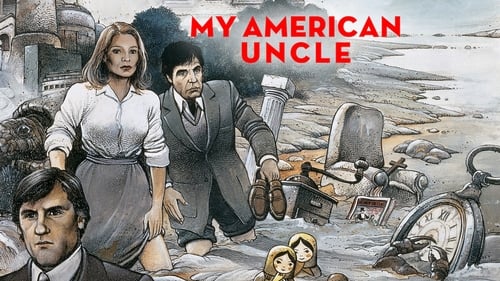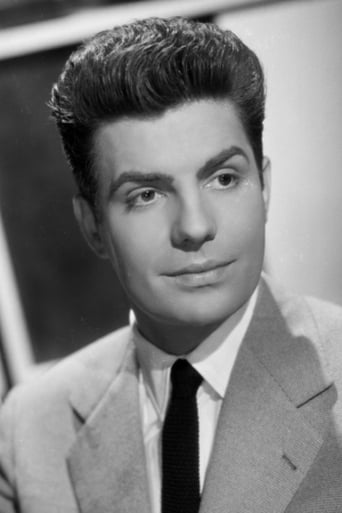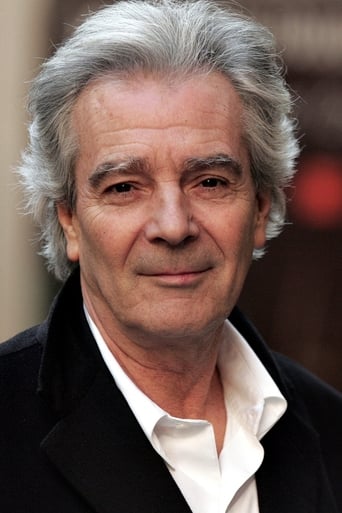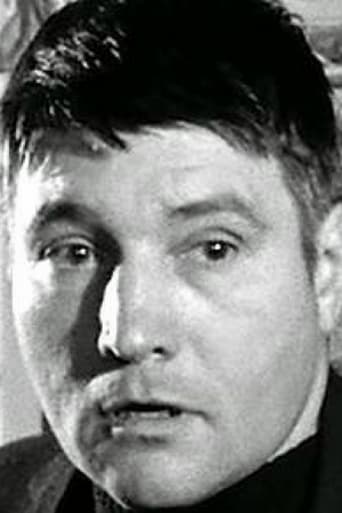Mjeteconer
Just perfect...
Griff Lees
Very good movie overall, highly recommended. Most of the negative reviews don't have any merit and are all pollitically based. Give this movie a chance at least, and it might give you a different perspective.
Cassandra
Story: It's very simple but honestly that is fine.
Scarlet
The film never slows down or bores, plunging from one harrowing sequence to the next.
thinbeach
Cinema is typically an emotional realm, so using it to present intellectual thesis poses quite the challenge. Firstly, you are at risk of not presenting the thesis carefully enough, which typically requires chapters of careful wording. Secondly, you risk dulling the action with exposition. Thirdly, you risk being preachy. And lastly, all of the above is exacerbated if the audience disagrees with your thesis. "My American Uncle" cannot perfectly avoid all these pitfalls - it comes with the territory - but it is a rare film where both science and poetry appear in harmony, without detracting, and even aiding, the story.From child to adult we follow the lives of three characters, born with naught to do with each other, becoming entwined in the most dramatic circumstances. Rene, a farmer turned textile executive. Janine, an aspiring actress who turns to textiles. And Jean, a bourgeois politician, who has an affair with Jean. In common they all aspire to greater success, higher status, and more joy in life, at the cost of their family relationships and health. Intercut and narrated over the plot is a psychological analysis of human behaviour, and how we unconsciously seek to gain control and power by (often unwittingly) dominating others. Our reactions to challenging situations are compared to rats in a cage when subjected to scientific experiments involving electric pulses. This exposition breaks the fourth wall, analysing the action as it plays out, yet manages to creep in and out just so that we are still swept up in the story, and the further it goes, the more emotional resonance it carries.If I were to offer one critique on the psychology, is that it never allows us to transcend our pain. In other words, it never explores the idea that mental stability or peace can be achieved without dominance, or in fact, for not everyone can be dominant, that it is absolutely necessary to do so. However if that message is not stated explicitly, it may be implied, given the calamitous climax.
Ilpo Hirvonen
Alain Resnais' "My American Uncle" (1980) is an exceptionally different film as a unique blend of science and art, however, it's not necessarily anything entirely new to the director himself. After all, time -- in its ontological, existential and historical context -- has always been a leading theme for Resnais. In fact, throughout his career Resnais has studied how the past forms the present and how our personal and collective memories form our consciousness and culture. Although Resnais' approach has always been more philosophical than psychological, in "My American Uncle" this thematic study has been taken to a whole new level: it has turned into a laboratory experiment with three fictional characters whose stories both differ and coincide, leading into an inevitable fusion.In addition to this trio the film has a fourth integral character, Henri Laborit, a scientist devoted to basic research, whose evolutionary and behaviorist theories are examined in the lives of the three characters. Sometimes subtle, sometimes blatant, but always fruitful, this blend of science and art results not only in synthesis of reason and emotion, theory and practice, but also in profound dialectics of fact and fiction, reality and cinema. Above all, the freedom of the spectator is an essential element for Resnais and therefore, Laborit's commentary never works as an absolute frame of reference. On the contrary, the viewer is free to choose whether the fiction coincides with his theories or contradicts them. In close connection with the theme of time, here Resnais studies the essence of humanity. All the characters of "My American Uncle", including Laborit, are introduced from their childhood to the present, and the viewer is given a point of reference to ponder what makes us who we are. Resnais asks, for example, how does biology (gender, temperament and prenatal factors), environment (the films we see, the people we admire, family and culture) and the nerve system affect our development. In brief, Resnais contemplates what it means to be a human being. Laborit himself offers a thought on this by saying that man is "a memory that acts."All in all, "My American Uncle" is a film that has been built with precision and care. When watched right, it unfolds in an utterly beautiful fashion. The film is as if an organic mosaic -- like human life itself -- which gathers its final, though subjective, form later in the spectator's mind as the pieces come together. The stories, first introduced in collage-like photo montage, aren't finished for they continue their development outside the borders of the screen. These are the stories about perpetual failures and the fragility of happiness and contentment. All the characters are hoping for something better. Their mundane existence is characterized by a constant yearn for freedom, love and happiness. All of them are waiting for something -- for their own American uncle.
chaos-rampant
Usually with films we supply our own model of viewing, what values and parameters we accept to matter. Here the model is built in the film itself. It's an epistemological vision of human behavior patterns, guided by a behavioral biologist. We are provided with a set of criteria that govern our actions, fight or flight, actions taken to prolong pleasurable sensations or to avoid their opposite, and based upon the scientist's research, Resnais creates scenarios to exemplify them. Theory in practice, more or less.This is the first handicup of the film for me. Resnais's consistent mark of genius has been his ability to visualize the mind as a threedimensional space, where by characters who act as our proxies into this world of the mind we can wander that space in an effort to discern the mechanisms that sustain it. How the forms we later experience as real come into being, illusionary. His vision is poignant for me precisely because it is translated as cinema, which as a blank canvas where upon it various flickering narratives are projected, is an ideal replica of the mind. He gave us Hiroshima and Marienbad, which is more than most directors contributed to the medium.But Resnais always approached his subject as a poet, with capacity for awe and mystery, whereas now his vision feels constricted to fit criteria and structures.Nonetheless the film does well to present us with situations we may know from life. An illicit thryst, frustrations at work, various ambitions for love or power thwarted, the outcomes of these don't matter. We're meant to identify the roots of suffering, how it arises in the form of sensation within the matrix that we experience as reality.So far the film is wise, in showing us to be lab rats trapped in a glass panel box which is intermittently electrocuted by unseen devices. Perhaps we come to understand by this how suffering is an inate response to life in the cage, therefore inescapable. And how the devices that produce our suffering are invisible to us from inside the cage. Even more importantly, how our various attempts to imprint meaning on the objects of our world, by naming them or pretending to arrange them into patterns or hierarchies, are merely masks we have devised to conceal simple impulses and desires. To be safe or sated, or to avoid pain.But the film is cautiously scientific, and will not venture further. The above important realization is mute for me without the spiritual. It is a dry understanding of fascinating stuff.None of which is very subtle anyway. We're lectured a bit. We actually revisit excerpts of earlier scenes so we can identify specific reactions as narrated to us by the scientist. The lab rat metaphor couldn't beat us around the head more, if we actually saw the actors with the head of a rat reenact an angry exit. Wait, we do! But none of this bothers me overmuch. What bothers me is the pessimism.Which is to say that having understood all this, the mechanisms that control the apparent reality we experience as our everyday routine, we are in position to transcend them. Our bodies may remain in the cage, yet having understood all this, how various forms of ego and desire blind us, our consciousness is already out of it. A glimpse out of the box is possible. Or as the film says, understanding the laws of gravity does not mean we escape them but we can get to the moon.This is of course a fundamental attribute of how we are not like animals. We are not even animals with the unique ability to remember and form connections between the objects of memory. We are spirited beings. The film, conservative as issued under the credence or pretence of science, does not dare to articulate as much.But then we have the final image, which says more than most films ever did. It's something I'll want to keep inside of me.We see the mural of a tree painted on the brick wall of a building. From a distance, it looks beautiful, perhaps the real thing. But once up close, we see the beautiful, harmonious shape for what it is. Bricks as particles, a structure ugly, functional, nondescript, bearing no resemblance to the overall shape.Two levels of reality then, apparent and ultimate. Order, shape, meaning from afar. Distinctions between brick and tree, as created in the eye. But once inside we understand the emptiness, the sameness of everything. How the above attributes are illusionary, imprints of the eye upon the wall. Will this image terrify or soothe you?Perhaps the film understands more than it lets out from its cautious application of science. This is one of the 5 best metaphors in the history of cinema. It's so good, it's worthy of being in Blowup.
mark-4522
I gave this an 8 out of 10 because while I believe that the first half hour of the film is necessary to set the stage, it lost my wife who is ordinarily a die-hard Gerard Depardeu fan. When watching a film you've paid 8 bucks for, you don't have a choice. You feel a need to sit and watch and get your money's worth. But on DVD or on-demand, the lesser attention spanned may walk off before the film gets rolling.OK, that said, once it gets rolling it becomes a wonderfully astute, and touching film about our humanity. Gerard plays his usual lovable oaf and brings warmth and humanity to the film when the other characters, while sympathetic, are cold and "reptilian" to quote the narrator. Gerard's character made me ask whether a certain level of foolishness was necessary to keep us humble and honest.Finally, the film is very French and high culture to the point of being almost a parody of such films. It's a kind of dark comedy that's so subtle, that some people won't get it. I know my wife didn't.Finally, there are distributions available in wide screen and even HD that was magnificent. I'm sure it's still great on letterboxed but try to get the widescreen/HD version or upconverted.







